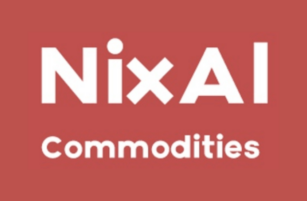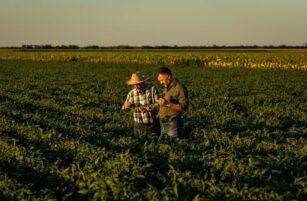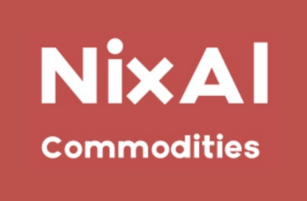Insight Focus
- Oilseed markets have gone into overdrive in recent weeks.
- This follows the release of the US EPA’s limits for biofuel blending in ‘23-25
- This is unfolding at the same time as a squeeze on global soybean meal supplies.
Renewable diesel 2.0 (RD 2.0) has been a theme of mine for some time now and my nomenclature suggests there was a RD 1.0 as well, which there was, and it featured a rapid change to the flat price of global vegetable oils and the Chicago Mercantile Exchange’s (CME) soybean oil forward futures curve that necessarily caused trade flow patterns and consumer behavior, both from the food and fuel industry, to shift. And that is happening again, now, very rapidly, thus the 2.0 designation. The outsized expansion in nearby demand for vegetable oil feedstock from the RD industry relative to domestic and imported vegetable oil production and stored inventories drove 1.0; it is driving 2.0.
Oilseed markets have gone into bull market overdrive since the EPA announced its final limits for ethanol and biomass-based diesel (BBD) inclusion that the fuel industry is necessarily obligated to blend into petroleum-based gasoline and diesel fuels for the period 2023-2025. While my supposition has been the market would wait to hear from management teams of publicly listed companies that produce biofuels and biofuel feedstocks, see the list at the end of this note, during the upcoming Q2 2023 earnings calls, to get a sense of the private sector’s response to the EPA (before going into overdrive if the companies driving RD production pooh-poohed the EPA’s decision as short term and irrelevant to the carbon reduction ambitions of the industry), the market has done no such thing: it has moved into action and the action (we traders call it volatility) is expanding.
If a picture is worth a thousand words, then the pictures I will share with you will help me help you understand the state of the global oilseed markets. First picture is the derivative instrument used by the global soybean industry to hedge margins that has a very high correlation to physical margins for US processors and less so for global players, primarily in Brazil and Argentina. I am sorry for you global readers that this margin chart is not expressed in dollars per metric ton (your usual metric); it is expressed in the very American terms of dollars per 60-pound bushel but you get the point: the derivative crush margin has doubled since EPA issued a very disappointing obligation for BBD blend. Imagine if the EPA had expanded the RVO instead of letting the disappointing initial proposal from December stand.

In advance of the EPA’s announcement Cargill Inc’s vegetable oil trade desk made a very public display of its bearish attitude toward supply and demand of soybean oil and executed a transaction that suggested an expectation of surplus supplies in the physical markets and waning demand, likely, and here I am guessing, anticipating the EPA’s conservative blend obligations for the period 2023-2-25: they filled up the CME’s soybean oil window with inventory via a delivery against the May 2023 contract. ADM and Bunge took the inventory (Cargill subsequently scrambled to take back its own delivered inventory) and as of last night the 3 major producers moved nearly all of it out of the delivery window and into the physical markets. The nearby futures curve, here represented by the August v the September contracts, displays the panic that ensued from those who shorted the curve or nearby futures and consumers without coverage (likely trying to coattail Cargill’s strategy and likely not to do that again any time soon). Ouch.

Source: Refinitiv Eikon
So RD 2.0 is under way and deer (domestic and global consumers) and headlights (Mr. Market) are coming together quickly. Now stay with me on this one because I am about to introduce another few oilseed wrinkles. Consider the below table, a snapshot of the CME’s complete soybean meal futures curve. The yellow arrow is this year’s curve; the green arrow is last year’s curve; the light blue underline is the open interest for the futures contracts today; the purple underline is open interest for futures contracts a year ago.

Trust me when I say that last year the US soybean processing industry ran out of soybean meal, especially in the eastern half of the country (which we grain/oilseed traders call the Eastern Corn Belt (ECB)). I am going to repeat myself. Last year the ECB drew down its complete inventory of physical soybean meal and the shelves were empty. With that input, look closely at this year’s prices versus year ago: higher than year ago for the August and September contracts and steepening in that premium relative to a year ago starting with the October contract. The total number of traded contracts is more than 20% greater. Do you see the point? The soybean meal futures market is signaling a scenario of tighter supplies than a year ago (empty shelves until November when the industry could process enough new crop soybeans to restock supplies) with higher forward prices and with more contracts open, i.e. higher participation in the futures market likely due to a need by physical consumers unable to buy physical soybean meal.
The CME’s delivery window, via the futures market, is the only place in the world (that I know of) where a domestic or global consumer is guaranteed supply of physical soybean meal and it is…ummm…empty. Every region (green highlights) of the US delivery universe has an empty shelf (yellow highlights).

Higher prices and tight US supplies surely mean the world consumer will go elsewhere to originate supply, right? Not at these prices. The yellow squiggles detail the premium required last year in US soybean meal export prices, with a lot of that premium coming from the physical basis added to the futures price, to point the world consumer to other sources. No room for squiggling in this year’s prices.

This year US prices maintain a sliver of a premium to global prices and so the world consumer keeps coming back to the US for supply (and the USDA will recognize that in upcoming WASDE reports as they have slow-walked the recognition to date) and weekly spot sales of US soybean meal remain robust. Sales for the next marketing year (October-September basis) also remain robust, at about 125% of a year ago.
This is a quick aside, but I am a bit lost on the degree of market volatility in the global oilseed markets; I would have expected more, as in a lot more, price premium given this week’s destruction to Black Sea export infrastructure due to the Russia/Ukraine conflict. The region is not a major player in the protein meal supply for the world but it is a “player” and when supplies are tight every origin counts (see the Argentine export disaster down 5-7 million metric tons on average this year versus prior years).

So RD 2.0 is unfolding rapidly at the same time a squeeze on global soybean meal supplies is unfolding at the same time a European conflict is escalating at the same time the world is shunning US dollars as a medium of exchange which means price signals to Brazilian and Argentine farmers currently contemplating planting their crops are not moving higher all in their local currency and this combined points to:
- Sharply higher global oilseed prices
- Sharply inverted physical and futures prices for soybean meal and soybean oil
- Physical consumers coming to the CME delivery window looking for supply and standing for delivery of supplies that currently do not exist (soybean meal) or about to not exist (soybean oil)
All of the above market moving inputs are unfolding with these still to come: the Canadian forest fire smoke that has engulfed PRIME US soybean and corn production areas and the crop yield implications not really understood by the trade but a real concern that keeps many awake at night, the ongoing uncertainty of a return to the drought pattern that plagued major soybean producing areas of the US during April, May, and first half June, and again, that escalating war in a minor player for protein meal and oil for world consumption but a major player for European domestic consumption.

Next up, earnings calls:













